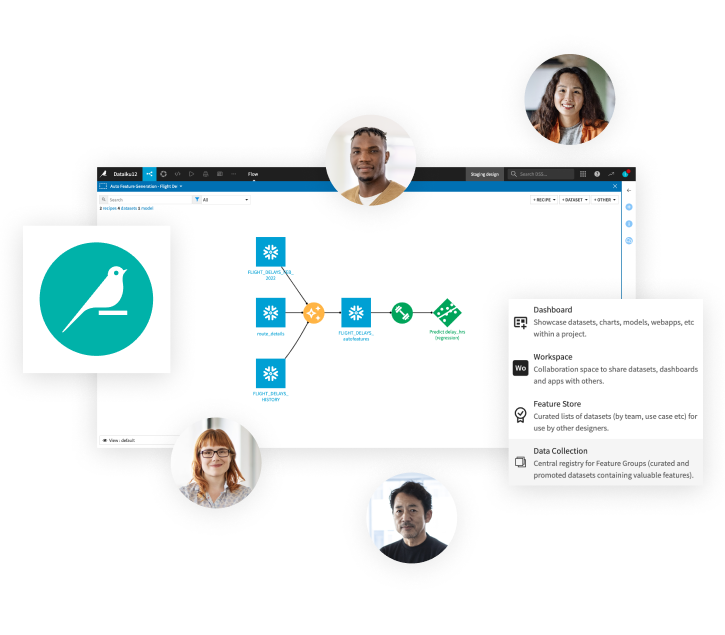The process of both creating and summarizing forecasts is often inefficient and time-consuming for FP&A analysts on finance teams. Now, with Generative AI — more specifically large language models (LLMs) — and Dataiku, analysts can easily build more accurate forecasting models and then quickly create email summaries of reports.
Feature Highlights
- Increase Accuracy: Use accessible visual machine learning to improve the overall accuracy of forecasts.
- Improve Efficiency: Automate key tasks and processes, from data prep to email creation.
- Automated Translation: When delivering reports to business units in different regions, use LLM-powered translation to avoid rework and delays.
- Improve Stakeholder Relationships: Business leaders receive easily interpretable forecast results, while analysts have more time to engage with business requests due to process efficiencies.
- Easy Reuse: With reusable templates and automation, say goodbye to repeating the same process month after month.
How It Works: Architecture
A financial forecast model project is built in Dataiku with dashboards for financial metrics. A financial analyst selects a region from this project, and once selected, an LLM call is initiated via API. The LLM uses the region along with the data from the financial forecasting project to create a structured report in email form with commentary on forecasts and key drivers. The financial analyst is able to perform manual changes to the email or leverage the LLM via text or voice command to adjust the text — including length, tone and language. Once finalized, the email can be sent from within Dataiku to the intended recipients.
To generate the commentary, the LLM will be fueled with sensitive internal data on business health and revenue performance. As a consequence, we advise using a containerized LLM to limit any risks of external leakage.
Also, as this LLM will be fueled with financial performance insights — usage of this LLM for other company use cases (like sales performance analysis) should be managed cautiously to avoid any unwanted correlation effects.
Responsibility Considerations
This application will greatly accelerate the work of Financial Analysts in providing contextualized analysis on financial performance and forecasts. However, humans should still be kept in the loop at all times, and checks should be performed to ensure the proposed commentary is fully aligned with internal company perspectives.
Other recommendations for the responsible use of a LLM to generate financial forecasting comments:
- The Financial Forecasting project should be audited to ensure it is making predictions free of bias — Dataiku makes this simple with explainable AI features.
- The organization should have an overarching Responsible AI policy, and it should be enforced with both the Financial Forecasting project as well as its LLM-personalized content generation extension.
- Any answers provided by the LLM should be clearly labeled as AI-generated, and users should be aware they’re interacting with an AI system.
- Limitations of the model should be documented and users should be reminded to use their professional judgment when interpreting the AI-generated answers.
- Ensure that sensitive data remains private per architecture recommendations.
- Regularly check that unauthorized users can not access sensitive data using the model or that the data is not unintentionally leaked to users who do not have the rights to see them.
- Outputs should be routinely reviewed for accuracy and relevancy.
- A feedback mechanism should be available for users to flag incorrect or unclear information.





